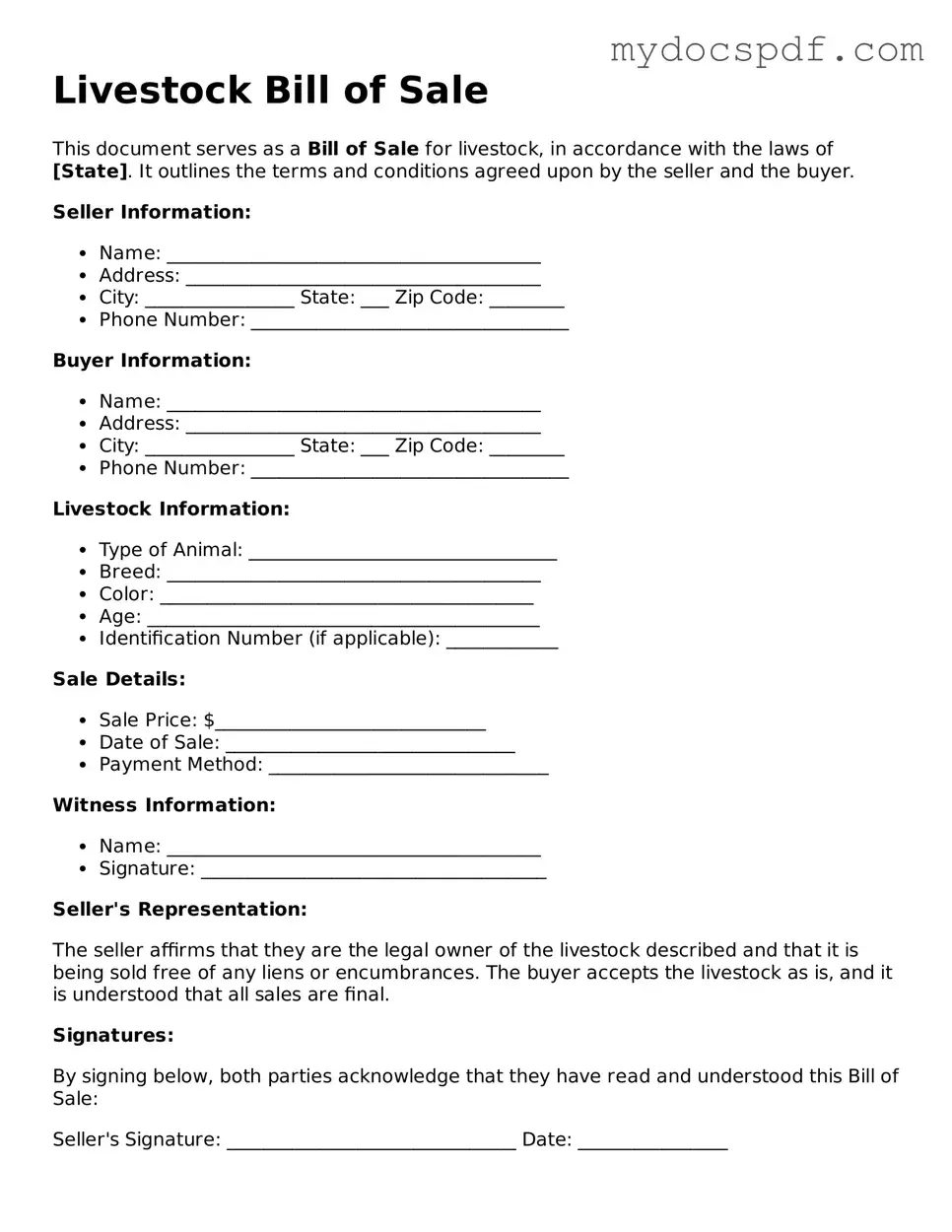Livestock Bill of Sale
This document serves as a Bill of Sale for livestock, in accordance with the laws of [State]. It outlines the terms and conditions agreed upon by the seller and the buyer.
Seller Information:
- Name: ________________________________________
- Address: ______________________________________
- City: ________________ State: ___ Zip Code: ________
- Phone Number: __________________________________
Buyer Information:
- Name: ________________________________________
- Address: ______________________________________
- City: ________________ State: ___ Zip Code: ________
- Phone Number: __________________________________
Livestock Information:
- Type of Animal: _________________________________
- Breed: ________________________________________
- Color: ________________________________________
- Age: __________________________________________
- Identification Number (if applicable): ____________
Sale Details:
- Sale Price: $_____________________________
- Date of Sale: _______________________________
- Payment Method: ______________________________
Witness Information:
- Name: ________________________________________
- Signature: _____________________________________
Seller's Representation:
The seller affirms that they are the legal owner of the livestock described and that it is being sold free of any liens or encumbrances. The buyer accepts the livestock as is, and it is understood that all sales are final.
Signatures:
By signing below, both parties acknowledge that they have read and understood this Bill of Sale:
Seller's Signature: _______________________________ Date: ________________
Buyer's Signature: _______________________________ Date: ________________
